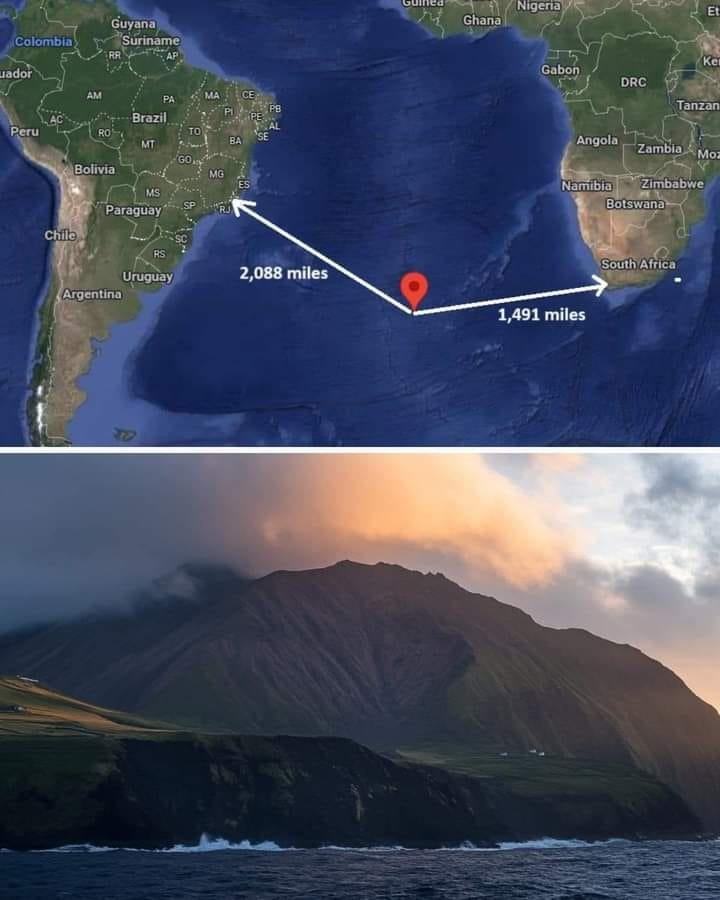In the vast expanse of the South Atlantic Ocean lies Tristan da Cunha, a tiny, remote island with a fascinating story. Known for its stunning volcanic landscape and unmatched isolation, this British Overseas Territory offers a glimpse into a lifestyle that is as unique as it is challenging. With a population of just 242 people, Tristan da Cunha is a world apart—a community bound by tradition, resilience, and an indomitable spirit of self-reliance.
- The Island That Learned of WWI’s End… a Year Late
- Geography and Location: One of the World’s Most Remote Places
- A Small, Close-Knit Community
- Sustenance Through Fishing and Farming
- The Challenges of Isolation and Climate
- A Pristine Environment in a Modern World
- A Unique Lifestyle Bound by Community and Resilience
- Tristan da Cunha Today: A Hidden World in Plain Sight

The Island That Learned of WWI’s End… a Year Late
The story of Tristan da Cunha took an unusual twist at the end of World War I. Due to its extreme isolation, communication with the outside world was rare and unreliable. In fact, it was an entire year after the war ended before the inhabitants learned that peace had been declared. This delayed news was a stark reminder of the island’s seclusion from global affairs—a place so remote that even world-changing events took time to reach it.
Geography and Location: One of the World’s Most Remote Places
Tristan da Cunha is located more than 2,000 miles from the nearest mainland, which is South Africa, and roughly the same distance from South America. This extreme isolation places it as one of the most remote inhabited islands in the world. A volcanic island formed from eruptions thousands of years ago, it boasts rugged cliffs, lush greenery, and black sand beaches. However, the same beauty that makes the island visually striking also contributes to the harshness of life here.
A Small, Close-Knit Community
The island is home to only 242 residents, and almost all are descendants of a small group of 19th-century settlers. This tight-knit community has developed its own unique culture and traditions, shaped by centuries of reliance on one another in an environment where cooperation is essential. Families on Tristan da Cunha are interconnected, and there is a strong sense of shared identity and community pride.
Sustenance Through Fishing and Farming
Due to its remoteness, the people of Tristan da Cunha have learned to be self-sufficient. The island’s inhabitants rely heavily on fishing and farming for their survival. Lobster fishing, in particular, is a major part of the local economy, with exports bringing in much-needed income. Farming, too, is vital to daily life, as residents grow their own vegetables and raise livestock. Despite the limited resources, the community has adapted well, developing sustainable practices to live off the land and sea.
The Challenges of Isolation and Climate
Living on Tristan da Cunha comes with its share of challenges. The isolation, while offering a unique way of life, also means that access to modern amenities and emergency services is limited. Supplies arrive infrequently, usually by ship, and reaching the island requires a multi-day journey from South Africa. Furthermore, the climate is often unforgiving, with strong winds, rough seas, and unpredictable weather. The volcanic terrain adds to these difficulties, as farming land is limited and the island’s rugged cliffs create natural barriers.
A Pristine Environment in a Modern World
One of the most notable aspects of Tristan da Cunha is its unspoiled environment. The island’s isolation has kept it largely untouched by modern pollution and environmental degradation. Rich in biodiversity, it serves as a sanctuary for various seabirds and marine life. The residents take pride in their surroundings and are actively involved in conservation efforts to maintain the natural beauty of their home. In a world where many ecosystems face threats, Tristan da Cunha stands out as an example of preserved nature.
A Unique Lifestyle Bound by Community and Resilience
The people of Tristan da Cunha have created a way of life that is both simple and profound. Bound by their shared heritage and reliance on one another, they have adapted to a life that many would find challenging. The isolation fosters a sense of unity, where everyone plays a role in supporting the community. While technology has reached the island in small ways, life remains largely unchanged, rooted in traditions and shaped by the demands of the environment.
Tristan da Cunha Today: A Hidden World in Plain Sight
Tristan da Cunha remains a place that few people will ever visit, but its story continues to fascinate the world. For those who call this remote island home, life may be challenging, but it is also rich with purpose and meaning. As the world becomes increasingly connected, places like Tristan da Cunha remind us of the resilience of human communities and the enduring beauty of simplicity.
